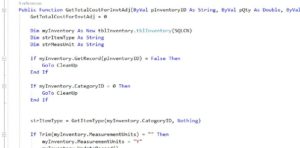Sales funnels are fragile things. When your company is in the process of converting a lead into a paying customer, a lot of events and interests have to line up just right. One of the most important factors people look for, whether you sell business to business products or you market to individual consumers, is a personal experience. Customers want to know that your company is available on their schedule. Communication needs to be prompt, professional, and easy, no matter what medium they’re using. If your salespeople handle a lot of calls, they need to have the right tools so their leads can reach out to them with questions and call them easily when they’re ready to make a purchase. Here’s how Voice over IP telephony services, or VOIP, can help:
Keep your extensions and company directory organized.
Before VoIP combined your telephony and administrative systems, keeping track of extensions was difficult. Every incident of employee turnover would have a few months of confusion as extensions get associated with a new phone owner. Voice messages required a complicated array of button pushing, and there was no centralized control over how to access specific employees.
But a VoIP system is easily edited. You can fill in the details of different employees, their extension, and their schedule. The information is added to and filled in through a computer program rather than through a patchwork of phones. Not only does this give easier control to a central authority, like someone in the human resources department, those profiles can also be visible to internal employees and, on a limited basis, on your company website. Everyone benefits when the contact details are easily changed and updated live.
Route calls between desk phones and cell phones based on your employees’ in-office schedules.
The line between in-office work and office work is changing. Whether you personally want a bright dividing line between work and personal hours, many salespeople are starting to migrate to a looser schedule. Lots of sales are made based on off-hours conversations and easy accessibility. Instead of the older method of giving valuable clients or leads two different phone numbers, your VoIP system can handle the schedule. Each employee can establish when phone calls should go to their office phone and when calls should go to their cell phones. They can also designate true off hours when calls should go straight to voicemail. Not only is that easy on prospective customers, but employees don’t have to tell anyone their cell phone number.
Make messages easier to customize and standardize.
Voicemail and automated messages can make or break a customer experience. Having basic, clunky messages that are made up of a template and added details sounds dated. They also sound bland and generic when you can’t add company-specific wording across every extension.
But VoIP message interfaces make it easier to upload sound bytes. Whether your company has a seasonal introduction message or promotional content that needs to be added to every telephone “signature,” VoIP makes it easier to manage. The system administrator can also distribute a sound file for mass upload and customization. This makes it easier to manage a standardized presentation style while still allowing for custom messages. Even better, you can run a report to see who hasn’t updated their recorded messages and make sure everyone’s on the same page.
VoIP systems don’t just help your customer service department. They’re an easy system that helps your salespeople reach out to new clients and ensures more callbacks. Even an online interface for telephone profiles makes everyone more accessible, gets rid of incorrect data, and improves your customers’ experience. Go to SystemsNet to see what that interface looks like.



